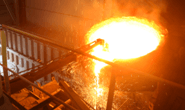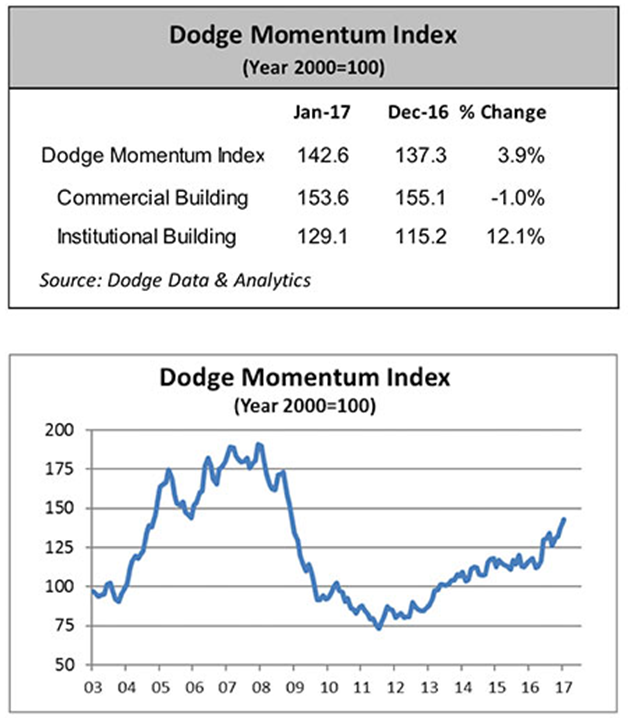Steel Markets

Dodge Momentum Index Up 3.9 Percent in January
Written by Sandy Williams
February 9, 2017
The January Dodge Momentum Index gained 3.9 percent to register at 142.6 from a revised reading of 137.3 in December.
The index is a monthly measure of the initial report for nonresidential buildings in planning and leads nonresidential construction spending for buildings by a full year. The index is considered an indicator of future construction growth.
Institutional construction planning gained 12.1 percent while commercial planning fell by 1.0 percent. Dodge Data & Analytics said the decrease in commercial is minor and planning for the sector remains near an eight year high, suggesting stronger growth in 2017.
Institutional planning has been the more volatile component of the index in 2016 but trended higher at the end of the year, suggesting 2017 may have potential for increased activity.
Eleven projects with a value exceeding $100 million entered the planning stage in January.

Sandy Williams
Read more from Sandy WilliamsLatest in Steel Markets

Hot-rolled coil buyers continue seeking certainty
Steel market participants contend that buyers will remain in “wait-and-see" mode until some market stability is restored.

Latin American steel advocates warn on cheap import flood
Subsidized Chinese steel imports and cheap steel products from Association of Southeast Asian Nations (ASEAN) entering Latin American (LATAM) are threatening the region's steel market.

CRU: Steel prices fall amid global demand weakness
The forceful headwinds bearing down on steel markets across the globe have created demand challenges and sent prices southward. The US, however, challenged the global trend.

Hot-rolled price hikes garner mixed reactions from the market
Several steel market sources say they were blindsided when mills increased spot prices for hot-rolled coils this week.

Steel market participants mull the impact of US/Mexico S232 negotiations
Steel market participants learned that negotiations between the US and Mexico include discussions about Section 232 tariffs on steel and aluminum despite President Trump’s June 3 proclamation increasing the tariffs from 25% to 50% for all steel and aluminum imports—except for those from the UK.

